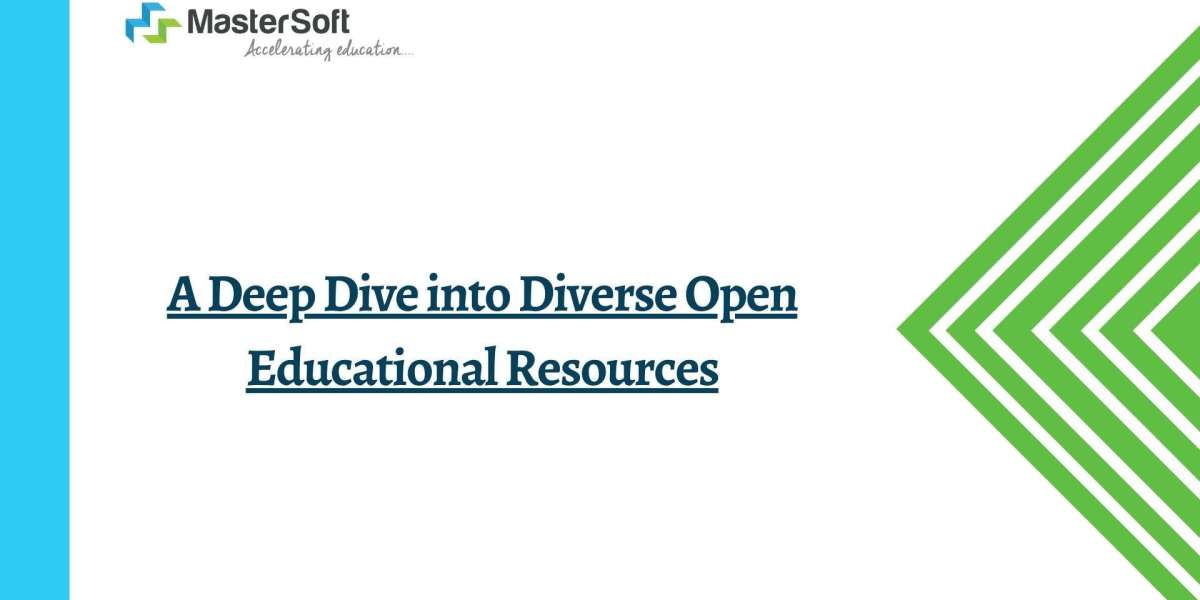In the dynamic landscape of education, the evolution of Open Educational Resources OER has transcended traditional textbooks, opening up a vast array of diverse resources for educators and learners. This blog post delves into the expansive world of OER, exploring the diverse formats and content types that go beyond textbooks. From multimedia resources to interactive simulations, we unravel the richness and versatility of OER that are transforming the educational experience.
1.Multimedia Resources for Engaging Learning:
One of the exciting dimensions of OER lies in its embrace of multimedia resources. Educational content is no longer confined to static text; it now includes dynamic elements such as videos, podcasts, and interactive presentations. This shift towards multimedia not only caters to diverse learning styles but also enhances engagement and comprehension.
Imagine a biology lesson enriched with immersive 3D animations or a history class that comes alive through archival video footage. OER's embrace of multimedia resources creates a vibrant and interactive learning environment that transcends the limitations of traditional textbooks.
2.Interactive Simulations for Experiential Learning:
OER takes learning a step further by incorporating interactive simulations into educational content. From scientific experiments to virtual field trips, these simulations offer students hands-on experiences that were once confined to the physical classroom. The ability to interact with and manipulate virtual elements enhances understanding, critical thinking, and problem-solving skills.
Consider a physics lesson where students can experiment with virtual pendulums or a chemistry class that allows for virtual lab exercises. OER's integration of interactive simulations brings experiential learning into the digital realm, breaking down barriers to access and fostering a deeper understanding of complex concepts.
3.Open Access to Academic Journals and Research Papers:
Beyond the realm of traditional textbooks, OER extends its reach to scholarly articles and research papers. Open access to academic journals allows educators and students to stay abreast of the latest research and advancements in their respective fields. This democratization of knowledge ensures that cutting-edge information is accessible to all, regardless of institutional affiliations or financial constraints.
The inclusion of academic journals within the realm of OER transforms the learning landscape, enabling students to engage with primary research materials and fostering a culture of inquiry and intellectual curiosity.
4.Open Courses and Massive Open Online Courses (MOOCs):
OER transcends individual resources and encompasses entire open courses and Massive Open Online Courses (MOOCs). These comprehensive learning experiences are freely accessible to anyone with an internet connection, offering a structured curriculum, assessments, and often, certificates of completion. This democratization of education allows learners from around the world to access high-quality courses from prestigious institutions.
Imagine an aspiring coder participating in a MOOC from a renowned computer science professor or a budding historian enrolling in an open course on ancient civilizations. OER's provision of open courses and MOOCs democratizes education on a global scale, breaking down barriers to quality learning experiences.
5.Open Textbook Platforms for Collaborative Authoring:
While textbooks have been a traditional focus of educational resources, OER introduces open textbook platforms that go beyond static content. These platforms facilitate collaborative authoring, allowing educators to contribute, edit, and customize textbooks to align with evolving curricular needs. This dynamic approach to textbook creation ensures that educational materials remain current, relevant, and reflective of diverse perspectives.
The collaborative authoring feature of open textbook platforms empowers educators to actively shape the educational content, fostering a sense of ownership and continuous improvement within the academic community.
6.Accessible Learning Modules and Learning Objects:
OER's versatility extends to the creation of standalone learning modules and learning objects. These modular components can be easily integrated into existing curricula, providing educators with the flexibility to tailor lessons to the specific needs of their students. Whether it's a standalone module on a specific math concept or a learning object that illustrates a historical event, these resources offer targeted support for diverse learning objectives.
The availability of accessible learning modules and learning objects within the realm of OER promotes a customized and adaptable approach to education, catering to the individualized needs of students.
7.Educational Games and Simulations:
OER embraces the gamification of education by incorporating educational games and simulations into the learning experience. These interactive elements not only make learning fun but also enhance retention and application of knowledge. Whether it's a language learning game or a virtual business simulation, OER's inclusion of educational games transforms traditional classroom dynamics.
The gamification of education through OER introduces an element of playfulness into the learning process, fostering engagement and creating memorable educational experiences for students.
Conclusion:
In conclusion, the world of Open Educational Resources goes beyond textbooks, offering a rich tapestry of diverse resources that redefine the educational landscape. From multimedia resources to interactive simulations, open access to academic journals, and collaborative open textbook platforms, OER's versatility knows no bounds.
Educators and learners navigating this expansive realm are not only beneficiaries but active contributors to a culture of open knowledge sharing. As OER continues to evolve, it sparks a renaissance in education, where learning is dynamic, engaging, and accessible to all. The journey beyond textbooks is an exploration of boundless possibilities, shaping a future where education is not confined by traditional constraints but is a collaborative and ever-evolving adventure.









